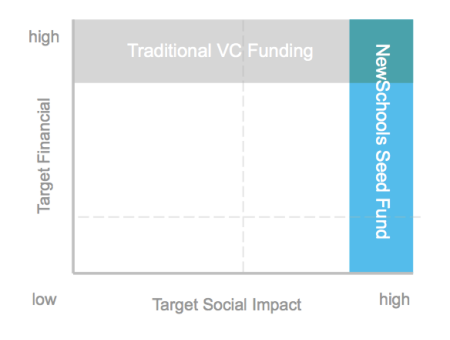“I have trouble understanding double, triple bottom line funds – there can only be one bottom line for impact funds. That’s why they call it the bottom.” – a paraphrase of Kevin Starr

I am thrilled by the attention the education market has been getting lately, from double bottom line, impact, and profit-maximizing funds alike. What “success” looks like is different to each stakeholder, and I consider myself lucky to work at a well financed fund that has just one bottom line: impact.
That said, there are days I envy the for-profit investor. With dollar values assigned to every action, measuring the success and value of a company, while not easy, becomes quite straight forward. If it makes money, you did well. If only there were a dollar sign for impact. Some magical metric that people could accumulate a lot of and say “I have done good. I am successful.”
Just what is the currency to measure social return on investment, and what are companies trying? When it comes to education technology, I see four main metrics for impact emerging: achievement, affinity, adoption, and audience.
- Achievement: how well does the product actually improve student outcomes? As an example, NewSchools portfolio company eSpark has shown impact through their case studies of improving student achievement – students using eSpark have been shown to advance twice as fast in a given time than control groups doing similar activities.
- Affinity: consider net promotor score and retention metrics. Create surveys that allow you to say “[some high percent] of teachers say [your product] is excellent for teaching [subject].” As further example, Ellevation has only lost one customer in their most recent year of operations.
- Adoption: organic growth is a third sign of impact: if it works, people tell their friends. Class Dojo’s role as the fastest growing K12 edtech company serves as an example of success by adoption.
- Audience: is your product reaching those students that need it most? How are you measuring this, and how do you plan to reach more disadvantaged students who cannot afford your technology? Learning the percentage of students who are on Free/Reduced lunch can be a good proxy for this.
While all these metrics are good indicators of impact, still none can be compared to the other apples to apples. Even in-depth qualitative research or surveys leaves a lot to be desired. That said, when looking at companies, we still continue to peruse what people are saying on twitter. For example:
Have I mentioned how much I LOVE @newsela and @readworks! WOW! So Powerful!
— Ron Farrow (@zrockstar) March 18, 2014
There is a complexity buried in here that money misses. A true capitalist might say that if you are able to make sales and scale revenue this is a sign the product is good and the market needs what you sell. But in education I believe it is the responsibility of an investor to look beyond the financial opportunity and into the impact, however ambiguous and (un)measurable it might be.


